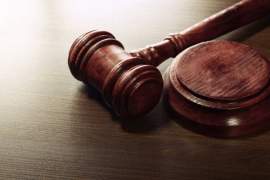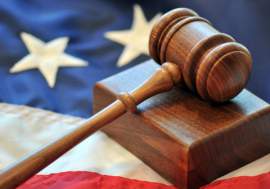
Samuel Chase

Popular In Supreme Court
How Many Supreme Court Justices Are There Justice Clarence Thomas Landmark Supreme Court Cases Supreme Court Building Us Supreme Court Docket Chief Justice John Roberts Hugo Black Justice Antonin Scalia Roger B Taney Justice Sonia Sotomayor Supreme Court Justices Supreme Court Judgments
Supreme Court Justice: Samuel Chase
Samuel Chase was an Associate Justice of the Supreme Court of the United States and also a signer of the Declaration of Independence as the representative from Maryland. Samuel Chase was born on April 17, 1741 in Princess Anne, Maryland as the was the only child of his family. Chase was homeschooled, and left at the age of eighteen and went to Annapolis, where he studied law under John Hall, an attorney. Samuel Chase was admitted to the bar in 1761. Afterwards, Chase started a law practice in the same town.
Samuel Chase was elected in 1764 to the Maryland General Assembly, and he held the seat for twenty years. Between 1774 and 1776, he was the member of the Annapolis Convention, where he represented Maryland at the Continental Congress. Samuel Chase was re-elected in 1776 became one of the signers of the U.S. Declaration of Independence. Chase stayed at the Continental Congress until 1778.In 1786, Samuel Chase moved to Baltimore, and he stayed there for the remainder of his life. Two years later, he was appointed as the Chief justice of the Baltimore District Criminal Court and served the seat until 1796. In 1791, Chase also became the Chief Justice of the Maryland General Court. President George Washington appointed Samuel Chase on January 26, 1796 as an associate justice of the United States Supreme Court, which he served until his death on June 19, 1811.
Famous Cases
Marbury v. Madison (1803): A landmark case by the Supreme Court and in United States law, as well as for worldwide law. The case created the basis for the power of judicial review by the judicial branch in the United States under the Constitution, specifically under Article III. This case also demonstrated the first time in Western history where a court nullified a law by pronouncing it unconstitutional, a process which is now called judicial review. The decision helped create and define the checks and balances found in American Government. The case came out from a petition by William Marbury to the Supreme, who had been appointed as the Justice of Peace in the District of Columbia by President John Adams. However, the commission was not subsequently delivered to Marbury. Marbury then proceeded by asked the Supreme Court to force James Madison, the Secretary of State to deliver the documents. However, Justice Samuel Chase along with the Court and Chief Justice John Marshall denied the petition. Instead, the Court held that specific provision found in the Judiciary Act of 1789 which allowed William Marbury to bring forth his claim regarding the petition to the Supreme Court unconstitutional, because the act tried to extend the Supreme Court's original jurisdiction beyond the point which was established by Article III of the constitution.
Stuart v. Laird (1803): A Supreme Court case most notably decided a week after Marbury v. Madison. The case dealt with a circuit judge's judgment, after the particular judge's job had been eliminated by the Judiciary Act of 1801’s repeal. This act created many federal judgeships and established new circuit court judges for intermediate appeals. Because of this, Supreme Court justices would not have to travel to hear appeals across the country, known as circuit riding. The court sustained the Judiciary Act of 1802, which resulted in only one federal judge required for a quorum in any circuit court, allowing Supreme Court justices to rely on the district court judges to hear intermediate appeals. This strategy proved necessary to eliminating circuit riding.
NEXT: A Short Biography on Justice Samuel Nelson




















